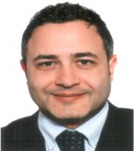Submissions
Submission Preparation Checklist
As part of the submission process, authors are required to check off their submission's compliance with all of the following items, and submissions may be returned to authors that do not adhere to these guidelines.- The submission of the following files are mandatory: Cover Letter, Article text and Agreement.
- The submission has not been previously published, nor is it before another journal for consideration (or an explanation has been provided in Comments to the Editor). They must not be published partially or completely in any other journal by the author.
- The paper submitted is in the precise format only. The submission file is in OpenOffice, Microsoft Word file format.
- The text is as per the template employs italics, rather than underlining (except with URL addresses); and all illustrations, figures, and tables are placed within the text at the appropriate points, rather than at the end.
- The text adheres to the stylistic and bibliographic requirements outlined in the Author Guidelines. The guidelines for preparing manuscripts for the journal are mentioned in the template.
- Wherever available, URLs for the references have been provided. All the papers are refereed and acknowledged. Once accepted they will not be returned.
- References are not cited in the abstract. Keywords closely reflect the topic and should optimally characterize the paper. Minimum four/five keywords are used or phrases in alphabetical order, separated by commas.
- During the Submission process, make sure to provide details about all co-authors (Name, Email, County, Affiliation etc).
- ORCID of the corresponding author is mandatory (https://orcid.org/).
- If submitting to the journal, the instructions in Ensuring a double-blind peer-review have been followed.
Research Article
Language
Authors are required to follow either American English or British English to prepare the manuscript, but not the blend.
Length of paper
The manuscript document of this type shouldn't be more than 20 pages, including tables, figures, and references, but appendices (if available). Any paper with more than 20 pages will be sent back to the authors for editing. Articles ought to be written in one column. Although authors are expected to write concisely, this should not result in unclear language.
Title Page
The following information is required to be on the title page: (i) The author(s)' names (ii) A succinct and self-explanatory title (iii) The authors' affiliation(s) and address(es) (iv) The corresponding author's phone number, fax number (optional), and email address.
Abstract
Please submit a 200–300 words abstract. There shouldn't be any undefined acronyms or references in the abstract.
Keywords
Three to six keywords must be included in the keyword section of the manuscript.
Acknowledgement
The acknowledgment section on the paper's title page is available for usage by the author (if any). All contributions are given the due credit they deserve for their efforts. This section aids in identifying the contributors accountable for components of work. It may include:
- Authors
- Non-authors (colleagues, friends, supervisor, etc.)
- Funding sources
- Editing services
- Administrative staff
Conflict of Interest
Research scenarios known as conflicts of interest occur when professional neutrality may be jeopardised, or believed to be jeopardised, due to conflicting financial, personal, or professional ties, or personal views and positions. Academic publication and research both frequently include conflicts of interest. To ensure that a manuscript is processed efficiently, it is the duty of everyone engaged in research and publishing, particularly writers, to recognise and disclose any possible conflicts. Authors must declare that they have or not have any conflict of interest.
Table and Figures
Instead of placing them at the end, include tables and figures throughout the text. The coloured version of the figures (if any) should be submitted by the authors to improve clarity. A caption should accompany each table and figure.
- Figure 1. Example of a figure caption (figure caption).
- Table 1. Table type styles (Table caption is indispensable).
References
The journal invites authors to attach IEEE Style references with their manuscripts. Please see the complete document on IEEE REFERENCE GUIDE. The number of references in review articles should not be less than fifteen.
Citations in the text
Please make sure that every reference that should be cited in the text is also included in the reference list (and the vice versa). Unpublished findings and private communications can be cited in the text but cannot be included in the reference list. The citations should be in the square bracket, such as [1]. For multiple but different citations are included in the same square bracket separated by comma, e.g. [1, 5, 26], whereas for sequential multiple citations on the same place can be mentioned as [21-28]. Citation of a reference as ‘in press’ implies that the item has been accepted for publication.
Reference List
References should be organised alphabetically first, and if required, then chronologically.
General structure and sequence for writing an academic journal article:
- Title
- Authors’ details
- Abstract
- Keywords
- Introduction
- Materials and Methods
- Results and Discussion
- Conclusion
- Acknowledgements
- Conflict of Interest
- References
Review Article
Language
Authors are required to follow either American English or British English to prepare the manuscript, but not the blend.
Length of paper
The manuscript document of this type shouldn't be more than 30 pages, including tables, figures, and references, but appendices (if available). Any paper with more than 30 pages will be sent back to the authors for editing. Articles ought to be written in one column. Although authors are expected to write concisely, this should not result in unclear language.
Title Page
The following information is required to be on the title page: (i) The author(s)' names (ii) A succinct and self-explanatory title (iii) The authors' affiliation(s) and address(es) (iv) The corresponding author's phone number, fax number (optional), and email address.
Abstract
Please submit a 250–350 word abstract. There shouldn't be any undefined acronyms or references in the abstract.
Keywords
Three to six keywords must be included in the keyword section of the manuscript.
Acknowledgment
The acknowledgment section on the paper's title page is available for usage by the author (if any). All contributions are given the due credit they deserve for their efforts. This section aids in identifying the contributors accountable for components of work. It may include:
- Authors
- Non-authors (colleagues, friends, supervisor, etc.)
- Funding sources
- Editing services
- Administrative staff
Conflict of Interest
Research scenarios known as conflicts of interest occur when professional neutrality may be jeopardized, or believed to be jeopardized, due to conflicting financial, personal, or professional ties, or personal views and positions. Academic publication and research both frequently include conflicts of interest. To ensure that a manuscript is processed efficiently, it is the duty of everyone engaged in research and publishing, particularly writers, to recognize and disclose any possible conflicts. Authors must declare that they have or do not have any conflict of interest.
Table and Figures
Instead of placing them at the end, include tables and figures throughout the text. The colored version of the figures (if any) should be submitted by the authors to improve clarity. A caption should accompany each table and figure.
- Figure 1. Example of a figure caption (figure caption).
- Table 1. Table type styles (Table caption is indispensable).
References
The journal invites authors to attach IEEE Style references with their manuscripts. Please see the complete document on IEEE REFERENCE GUIDE. The number of references in review articles should not be less than fifty.
Citations in the text
Please make sure that every reference that should be cited in the text is also included in the reference list (and vice versa). Unpublished findings and private communications can be cited in the text but cannot be included in the reference list. The citations should be in the square bracket, such as [1]. For multiple but different citations are included in the same square bracket separated by a comma, e.g. [1, 5, 26], whereas sequential multiple citations in the same place can be mentioned as [21-28]. Citation of a reference as ‘in press’ implies that the item has been accepted for publication.
Reference List
References should be organized alphabetically first, and if required, then chronologically.
General structure and sequence for writing a review article:
- Title
- Authors’ details
- Abstract
- Keywords
- Introduction
- Discussion
- Observations
- Recommendations
- Conclusion
- Acknowledgment
- Conflict of Interest
- References
Case Study
Language
Authors are required to follow either American English or British English to prepare the manuscript, but not the blend.
Length of paper
The manuscript document of this type shouldn't be more than 15 pages, including tables, figures, and references, but appendices (if available). Any paper with more than 15 pages will be sent back to the authors for editing. Articles ought to be written in one column. Although authors are expected to write concisely, this should not result in unclear language.
Title Page
The following information is required to be on the title page: (i) The author(s)' names (ii) A succinct and self-explanatory title (iii) The authors' affiliation(s) and address(es) (iv) The corresponding author's phone number, fax number (optional), and email address.
Abstract
Please submit a 150–200 words abstract. There shouldn't be any undefined acronyms or references in the abstract.
Keywords
Three to six keywords must be included in the keyword section of the manuscript.
Acknowledgement
The acknowledgment section on the paper's title page is available for usage by the author (if any). All contributions are given the due credit they deserve for their efforts. This section aids in identifying the contributors accountable for components of work. It may include:
- Authors
- Non-authors (colleagues, friends, supervisor, etc.)
- Funding sources
- Editing services
- Administrative staff
Conflict of Interest
Research scenarios known as conflicts of interest occur when professional neutrality may be jeopardised, or believed to be jeopardised, due to conflicting financial, personal, or professional ties, or personal views and positions. Academic publication and research both frequently include conflicts of interest. To ensure that a manuscript is processed efficiently, it is the duty of everyone engaged in research and publishing, particularly writers, to recognise and disclose any possible conflicts. Authors must declare that they have or not have any conflict of interest.
Table and Figures
Instead of placing them at the end, include tables and figures throughout the text. The coloured version of the figures (if any) should be submitted by the authors to improve clarity. A caption should accompany each table and figure.
- Figure 1. Example of a figure caption (figure caption).
- Table 1. Table type styles (Table caption is indispensable).
References
The journal invites authors to attach IEEE Style references with their manuscripts. Please see the complete document on IEEE REFERENCE GUIDE. The number of references in review articles should not be less than fifteen.
Citations in the text
Please make sure that every reference that should be cited in the text is also included in the reference list (and the vice versa). Unpublished findings and private communications can be cited in the text but cannot be included in the reference list. The citations should be in the square bracket, such as [1]. For multiple but different citations are included in the same square bracket separated by comma, e.g. [1, 5, 26], whereas for sequential multiple citations on the same place can be mentioned as [21-28]. Citation of a reference as ‘in press’ implies that the item has been accepted for publication.
Reference List
References should be organised alphabetically first, and if required, then chronologically.
General structure and sequence for writing a case study article:
- Title
- Authors’ details
- Abstract
- Keywords
- Introduction
- Case Presentation
- Management and Outcome
- Discussion
- Conclusion
- Acknowledgements
- Conflict of Interest
- References
Short Communication
Language
Authors are required to follow either American English or British English to prepare the manuscript, but not the blend.
Length of paper
The manuscript document of this type shouldn't be more than 10 pages, including tables, figures, and references, but appendices (if available). Any paper with more than 10 pages will be sent back to the authors for editing. Articles ought to be written in one column. Although authors are expected to write concisely, this should not result in unclear language.
Title Page
The following information is required to be on the title page: (i) The author(s)' names (ii) A succinct and self-explanatory title (iii) The authors' affiliation(s) and address(es) (iv) The corresponding author's phone number, fax number (optional), and email address.
Abstract
Please submit a 100–150 words abstract. There shouldn't be any undefined acronyms or references in the abstract.
Keywords
Three to six keywords must be included in the keyword section of the manuscript.
Acknowledgement
The acknowledgment section on the paper's title page is available for usage by the author (if any). All contributions are given the due credit they deserve for their efforts. This section aids in identifying the contributors accountable for components of work. It may include:
- Authors
- Non-authors (colleagues, friends, supervisor, etc.)
- Funding sources
- Editing services
- Administrative staff
Conflict of Interest
Research scenarios known as conflicts of interest occur when professional neutrality may be jeopardised, or believed to be jeopardised, due to conflicting financial, personal, or professional ties, or personal views and positions. Academic publication and research both frequently include conflicts of interest. To ensure that a manuscript is processed efficiently, it is the duty of everyone engaged in research and publishing, particularly writers, to recognise and disclose any possible conflicts. Authors must declare that they have or not have any conflict of interest.
Table and Figures
Instead of placing them at the end, include tables and figures throughout the text. The coloured version of the figures (if any) should be submitted by the authors to improve clarity. A caption should accompany each table and figure.
- Figure 1. Example of a figure caption (figure caption).
- Table 1. Table type styles (Table caption is indispensable).
References
The journal invites authors to attach IEEE Style references with their manuscripts. Please see the complete document on IEEE REFERENCE GUIDE. The number of references in review articles should not be more than fifteen.
Citations in the text
Please make sure that every reference that should be cited in the text is also included in the reference list (and the vice versa). Unpublished findings and private communications can be cited in the text but cannot be included in the reference list. The citations should be in the square bracket, such as [1]. For multiple but different citations are included in the same square bracket separated by comma, e.g. [1, 5, 26], whereas for sequential multiple citations on the same place can be mentioned as [21-28]. Citation of a reference as ‘in press’ implies that the item has been accepted for publication.
Reference List
References should be organised alphabetically first, and if required, then chronologically.
General structure and sequence for writing a short communication article:
- Title
- Authors’ details
- Abstract
- Keywords
- Introduction
- Materials and Methods
- Results and Discussion
- Conclusion
- Acknowledgements
- Conflict of Interest
- References
Copyright Notice
Authors require to agree to the following copyright notice as part of the submission process.
The authors retain the copyright in the article and grant A2Z Journals a non-exclusive license to publish the article. Authors grant the publisher the right of first publication.
The work published by A2Z Journals is freely available to the global community without any access restrictions.
This approach aligns with our commitment to fostering knowledge dissemination and supporting open science. We encourage readers to share, cite, and build upon the findings in this work, recognizing the essential role of open access in advancing scholarly communication and innovation.
Privacy Statement
The names and email addresses entered in this journal site will be used exclusively for the stated purposes of this journal and will not be made available for any other purpose or to any other party.
We may request some personal information from you when you use this website, including your name, affiliation or employer, postal address, email address, phone number, credit card or other payment information, and a password (in cases where a login is available) ("Personal Information"). We may also gather additional data, such as your IP address, the type of browser you are using, the country you are in, the area code for your phone, the website pages you visited, and the URL you came from.
We do not favour or disfavour any religion or political party. We are dedicated to protect your privacy online or offline. We review our policy from on regular intervals, so the users are suggested to view the latest version. As a user of this website, it is considered that you are agreed on the privacy policy and term of use.




















